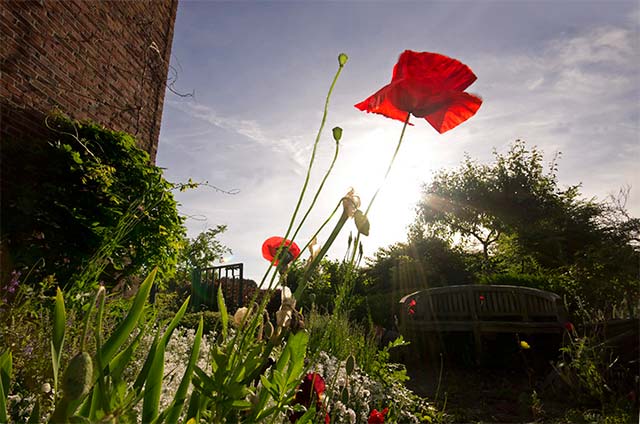
Use the light: Get down low and use backlighting so it’s shining through the flowers.
Sony Alpha 33 + Sigma, 10-20/4-4.6, f/14, 1/100 sec.
Your own garden can be one of the most convenient locations to make photos – out of your bed and you’re ready to make great images. If you don’t have a garden, don’t despair, others around you may allow you to make images in their gardens, or you can visit a nearby park or arboretum.
While photographing individual flowers or groups of flowers is a must and make for stunning images, don’t forget about the surrounding environment and all the other wonderful and interesting features found within a garden, such as benches, tools, decorative items, or fences. And be sure to include the insects and spiders that make a garden their home. All of these make great subjects and can add more interest to your garden photo portfolio.
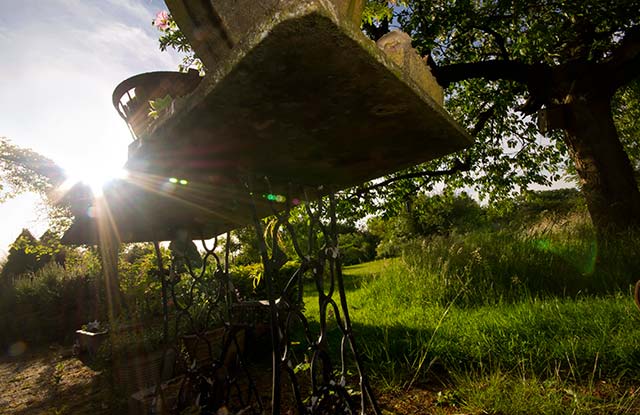
Observe your composition: The tree on the right provides depth and its size creates a feeling of space. With the camera being held at a low position, the view is extended beyond the table and provides you with a sense of its location within the garden.
Sony Alpha 33 + Sigma 10-20/4-4.6, f/16, 1/40 sec.
To understand what times of day are best to make photos of a garden, you need to first learn about “light”. In order to learn and understand the light you can do a test. Photograph at various times throughout the day. Take the photos of the garden from the same location and camera position and keep your camera settings the same for each exposure. Then look at the photographs. You’ll notice the differences in how the angle of the light plays on the subject’s colors, textures and shadows.
Here are a few tips to get you started with your garden photography.
Tip 1. Check out and photograph your subject from all the angles until you find those special compositions. Don’t forget to get down really low and photograph from below the subject.
Tip 2. Photograph from both vertical and horizontal camera positions to see which provides the best compositional balance.
Tip 3. Get up close and intimate with your subject. You can still provide the viewer with a portion of the garden environment without it distracting from the subject.
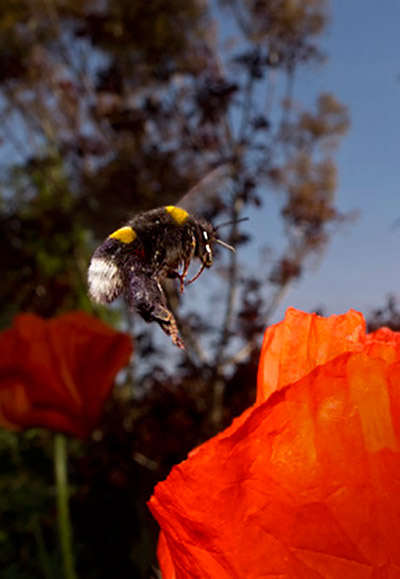
Keep your eye out
for the garden critters:
Observe your garden at
various times of the day to see which insects are visiting the area. When you
take photos of insects approach them slowly and carefully so you don’t scare
them away. Patience is key when photographing these busy bees!
Sony Alpha 33 + Sigma 20/1.8 + flash, f/10, 1/100 sec.
Tip 4. Use the low-angled light of the sun during sunrise or sunset. While looking through the viewfinder, search until the sun is in position within the image frame so that it highlights the subject to your liking. See if you can capture the rays of the sun in, around and through your subject.
Tip 5. Utilize back, front and side light. Each will highlight the details of a subject in a different way.
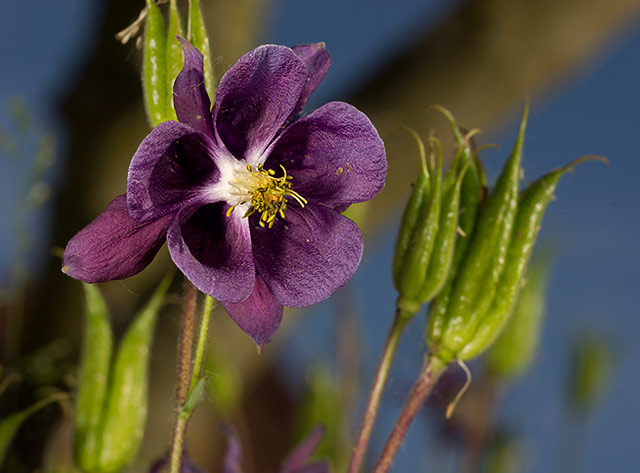
Get up close: Because there was a breeze and flower is dark purple, flash lighting was necessary to include the details of the flower.
Sony Alpha 33 + Tamron 90/2.8 macro + flash, f/16, 1/160 sec.
Tip 6. Keep composition in mind. Look around the subject and include interesting and supportive garden environmental features. Take care that these elements do not distract the viewer’s eye from the subject.
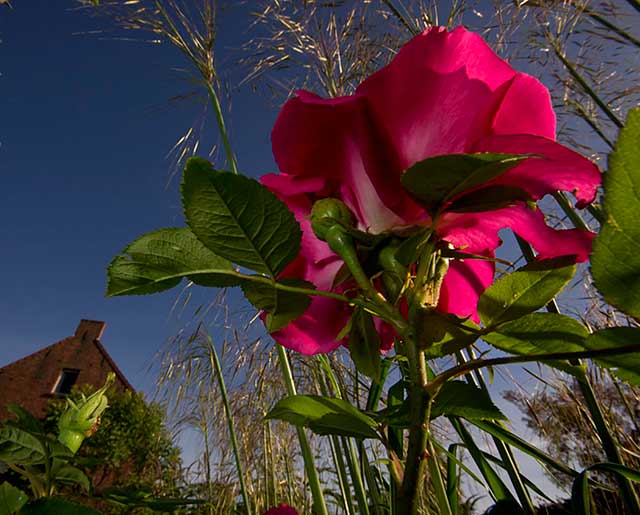
Try a new perspective: The camera was held at ground level and under the rose, providing detail of the rose while at the same time showing its position within the garden.
Sony Alpha 33 + Sigma 10-20/4-4.6, f/16, 1/100 sec.
Note: This creates a backlight situation, so you will need to compensate by overexposing. Start with +1 stop overexposure and adjust accordingly for the best results.
Tip 7. Look for pleasing color contrast, such as a colorful flower against a beautiful blue sky backdrop.
Tip 8. Provide a sense of depth, scale and space within the garden.
Have fun exploring your own garden or gardens and parks nearby.
You’ll be surprised at the array of photo opportunities hidden within them. You just have to “see”.
by Edwin Brosens
All text and photos: © 2013 Edwin Brosens. All rights reserved.

Leave a Reply